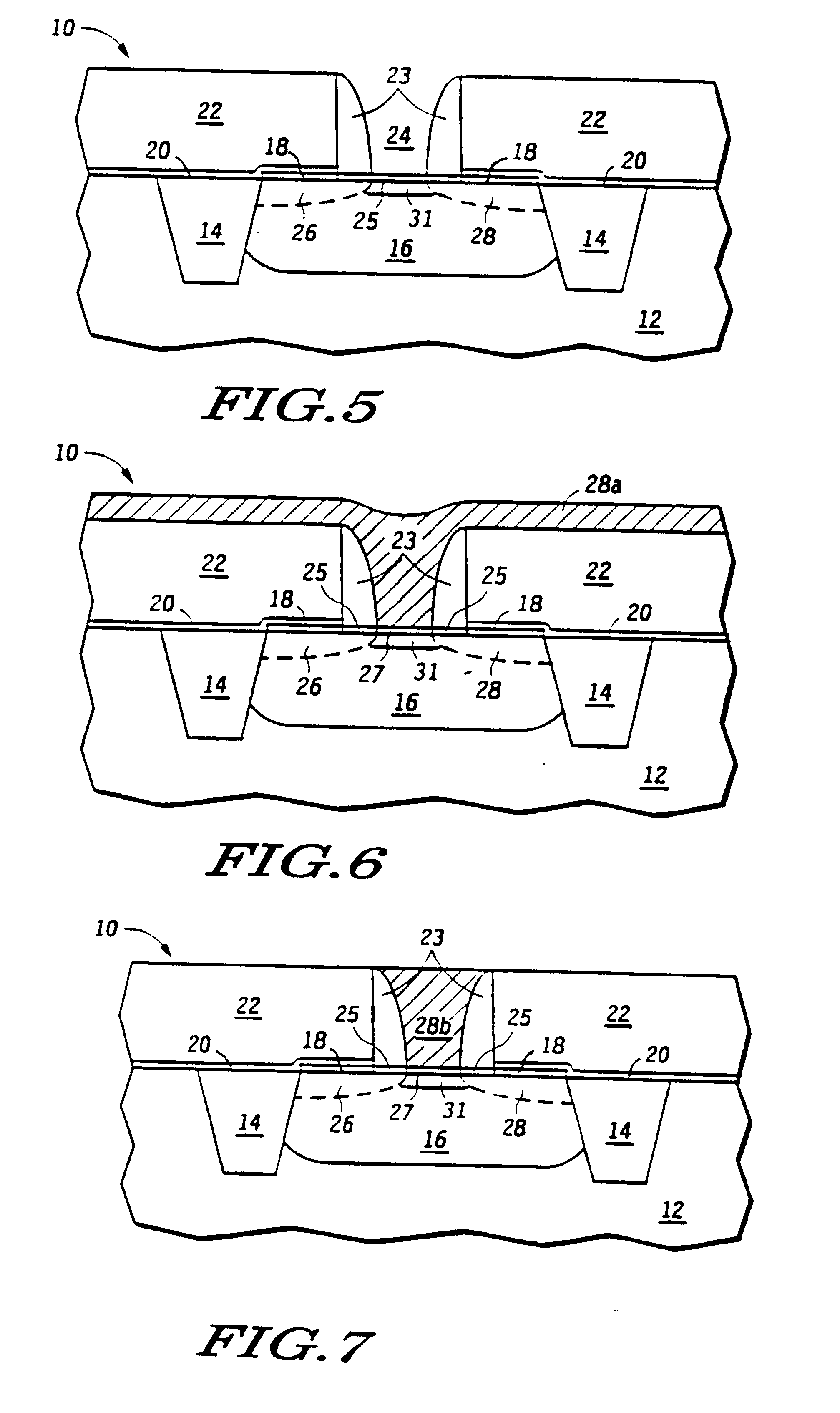Enhanced electroless deposition of dielectric precursor materials for use in in-laid gate MOS transistors
a technology of dielectric precursor materials and electroless deposition, which is applied in the direction of basic electric elements, electrical equipment, and semiconductor devices, can solve the problems of reducing performance by about 15% or more, adversely affecting polysilicon gates, and increasing the effective gate oxide thickness ("eot")
- Summary
- Abstract
- Description
- Claims
- Application Information
AI Technical Summary
Problems solved by technology
Method used
Image
Examples
Embodiment Construction
The present invention is based upon the discovery that formation of high quality dielectric layers, i.e., illustratively of, but not limited to, high-k dielectric layers comprised of at least one refractory or lanthanum series transition metal oxide or silicate, for use as gate insulator layers in in-laid gate (e.g., in-laid metal gate) MOS transistors and CMOS devices, can be readily formed by a process which prevents, or at least substantially reduces, access or exposure of the semiconductor (typically of Si but not limited thereto) substrate surface to oxygen at least during the initial stage(s) of the process. A key feature of the present invention is the formation on the substrate surface of an ultra-thin catalytic layer comprised of at least one noble metal, followed by catalyzed deposition thereon, by relatively low temperature electroless plating, of a thin layer of metal or metal-containing dielectric precursor material, e.g., a refractory metal such as of zirconium and / or ...
PUM
| Property | Measurement | Unit |
|---|---|---|
| thickness | aaaaa | aaaaa |
| thick | aaaaa | aaaaa |
| thick | aaaaa | aaaaa |
Abstract
Description
Claims
Application Information
 Login to View More
Login to View More - R&D
- Intellectual Property
- Life Sciences
- Materials
- Tech Scout
- Unparalleled Data Quality
- Higher Quality Content
- 60% Fewer Hallucinations
Browse by: Latest US Patents, China's latest patents, Technical Efficacy Thesaurus, Application Domain, Technology Topic, Popular Technical Reports.
© 2025 PatSnap. All rights reserved.Legal|Privacy policy|Modern Slavery Act Transparency Statement|Sitemap|About US| Contact US: help@patsnap.com



